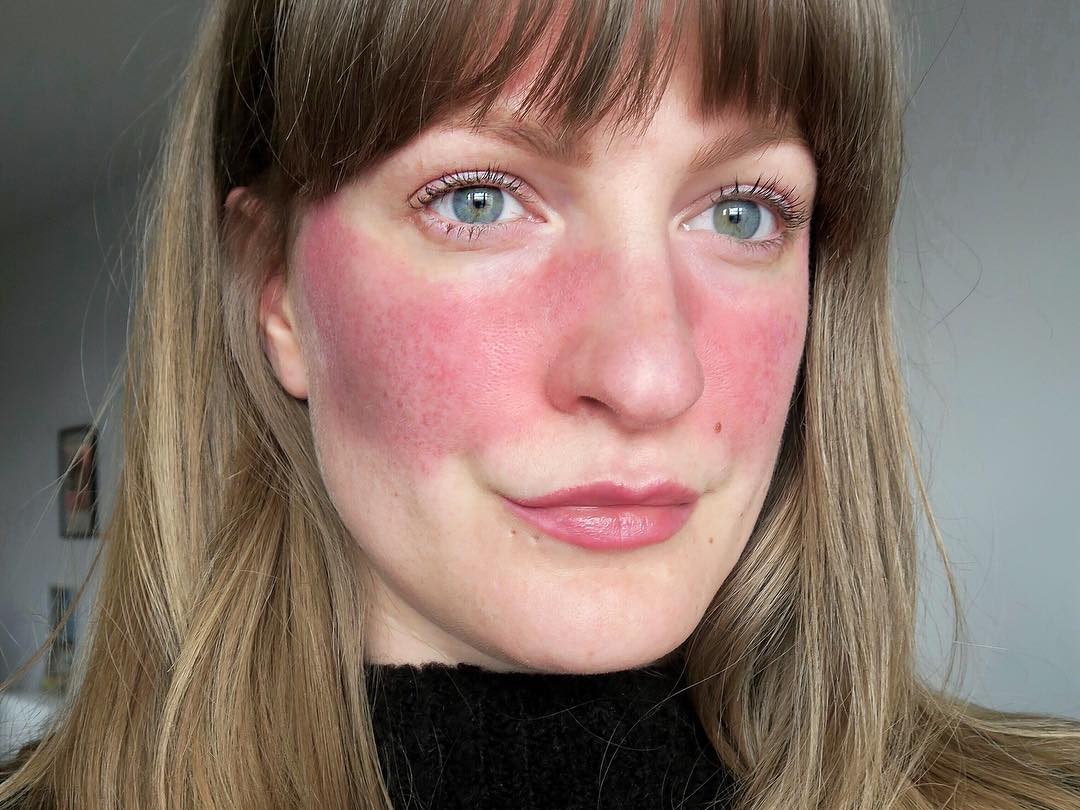Rosacea: Symptoms, Causes, Treatment
What are the symptoms of rosacea?
Rosacea is a common and chronic skin condition that primarily affects the face. It is characterized by redness, flushing, and visible blood vessels on the face, as well as bumps or pimples that may resemble acne. The symptoms of rosacea can vary from person to person, but common symptoms include:
- Facial Redness: Persistent redness on the central part of the face, including the cheeks, nose, chin, and forehead. The redness may come and go and may worsen over time.
- Flushing: Episodes of flushing or blushing, often triggered by certain triggers such as hot beverages, spicy foods, alcohol, or temperature changes.
- Visible Blood Vessels: Small, visible blood vessels (telangiectasia) on the face, especially on the cheeks and nose.
- Bumps and Pimples: Small, red, solid bumps or pus-filled pimples (papules and pustules) that resemble acne. These may come and go and can be sensitive or painful.
- Thickened Skin: In some cases, rosacea can cause the skin on the nose to thicken and become bumpy, a condition known as rhinophyma.
- Eye Irritation: Some people with rosacea may experience eye-related symptoms, such as dryness, irritation, redness, and swollen eyelids.
- Burning or Stinging: The skin may feel sensitive, burning, or stinging, especially when using certain skin care products or medications.
- Sensitive Skin: The skin may feel sensitive and may react to certain triggers, such as sunlight or wind.
The symptoms of rosacea can vary in severity and may come and go over time. In some cases, the condition may progress and become more severe if left untreated. It’s important to consult with a dermatologist for an accurate diagnosis and appropriate treatment if you suspect you have rosacea.
What are the causes of rosacea?
The exact cause of rosacea is not known, but it is believed to involve a combination of genetic, environmental, and vascular factors. Some factors that may contribute to the development of rosacea include:
- Genetics: There is evidence to suggest that rosacea may run in families, suggesting a genetic component to the condition.
- Abnormalities in the Blood Vessels: Rosacea is believed to involve abnormalities in the blood vessels of the face, leading to flushing, redness, and visible blood vessels.
- Demodex Mites: These are tiny mites that are naturally present on the skin. Some studies suggest that an overgrowth of Demodex mites may play a role in the development of rosacea.
- Immune System Response: Abnormalities in the immune system may contribute to the inflammation and redness seen in rosacea.
- Environmental Triggers: Certain environmental factors, such as sunlight, heat, cold, wind, hot beverages, spicy foods, alcohol, and stress, can trigger or worsen symptoms of rosacea in some people.
- Skin Barrier Dysfunction: Some research suggests that abnormalities in the skin barrier may contribute to the development of rosacea.
It’s important to note that while these factors may contribute to the development of rosacea, they do not necessarily cause the condition. The exact cause of rosacea is likely multifactorial, and more research is needed to fully understand the underlying mechanisms.
What is the treatment for rosacea?
Treatment for rosacea aims to control symptoms, reduce flare-ups, and improve the appearance of the skin. The treatment approach may vary depending on the severity of the condition and the specific symptoms present. Some common treatment options for rosacea include:
- Topical Medications: Topical medications, such as metronidazole, azelaic acid, or ivermectin, may be prescribed to reduce redness, inflammation, and the appearance of bumps and pimples.
- Oral Antibiotics: Oral antibiotics, such as doxycycline, minocycline, or tetracycline, may be prescribed to reduce inflammation and control bacterial growth. In some cases, low-dose antibiotics may be used long-term to prevent flare-ups.
- Topical Steroids: Topical steroids may be used for short periods to reduce inflammation, but long-term use is generally not recommended due to the risk of skin thinning and other side effects.
- Oral Medications: In some cases, oral medications such as isotretinoin or low-dose oral antibiotics may be prescribed to control more severe or persistent symptoms of rosacea.
- Laser or Light Therapy: Laser or light-based therapies, such as intense pulsed light (IPL) or pulsed dye laser (PDL) therapy, may be used to reduce redness, visible blood vessels, and thickened skin.
- Skincare Products: Gentle skincare products that are suitable for sensitive skin may help reduce irritation and improve the skin barrier function. Avoiding products that contain alcohol, fragrances, or other potential irritants is often recommended.
- Sun Protection: Protecting the skin from the sun’s ultraviolet (UV) rays is important, as sun exposure can worsen rosacea symptoms. Use a broad-spectrum sunscreen with an SPF of 30 or higher and wear protective clothing and a wide-brimmed hat when outdoors.
- Lifestyle Changes: Avoiding triggers such as hot beverages, spicy foods, alcohol, and stress may help reduce the frequency and severity of flare-ups. Gentle skin care practices, such as avoiding harsh scrubbing or rubbing the skin, can also help.
It’s important to consult with a dermatologist for an accurate diagnosis and appropriate treatment plan if you suspect you have rosacea. Treatment can help manage symptoms and improve the overall appearance and health of the skin.




